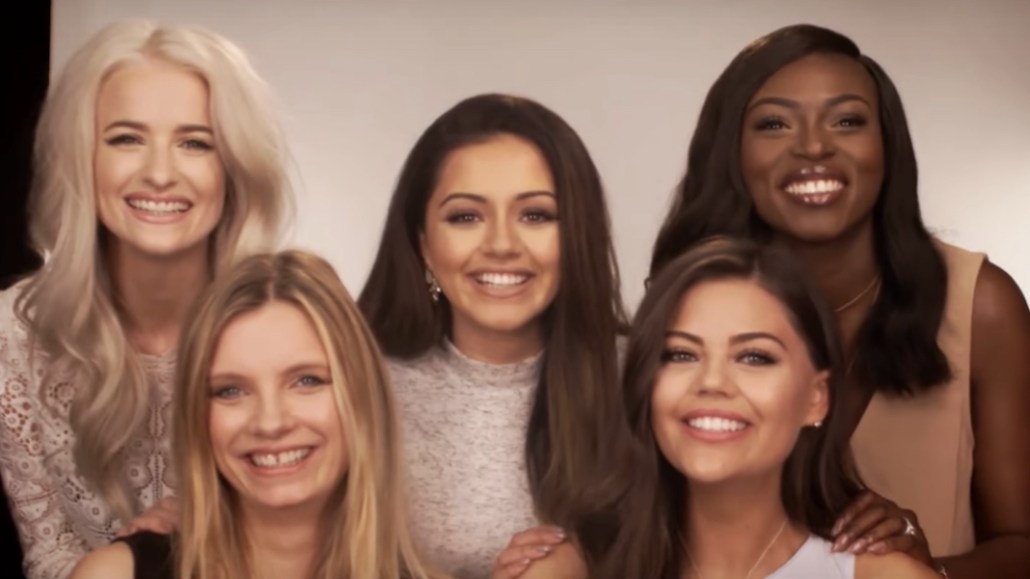
The rise of the beauty blogger has made over the cosmetics industry. Today, marketers not only navigate cut-and-dried celebrity endorsements but the reams of Instagram-famous contour queens.
But in these new waters, where high fees and confusion persist, how should they handle these relationships?
Last year, L’Oréal Paris created a five-member beauty squad, made up of ethnically diverse YouTube stars, and is now having them reveal new products attend events like Paris Fashion week. Together, the quintet — Emily Canham, Kaushal Modha, Patricia Bright, Ruth Crilly and Victoria Magrath — have helped the beauty brand reach new audiences online and shaped the company’s thinking around how to make its products, and its message, more inclusive.
Adrien Koskas, gm at L’Oréal Paris U.K., caught up with Digiday to reveal more. Answers have been lightly edited and condensed for clarity.
How are you thinking about influencers in 2017? Obviously we’ve seen them feature more prominently in your mainstream campaigns like True Match.
Historically, L’Oréal Paris has used spokespeople who are celebrities and actresses. But influencers have a different value because they are the voice of consumers. They can help us craft better campaigns, content and products and get live feedback in the process. Through them, we can reach communities we couldn’t reach before, and make the face of L’Oréal Paris more inclusive.
How does that feedback process with the beauty squad work exactly?
We actually took the beauty squad to the L’Oréal Paris lab earlier this month. After a lot of back and forth about the colors we can and can’t do, they shared several ideas about pigments they’d like to see. I’m sure there will be many more discussions like this as it is an ongoing relationship. For content, we’ve taken cues from them with our recent concealer launch by creating really easy how-to videos. And we also replicate some of their beauty routines — the order they use our products — at the brand level.
And how do you manage contractual obligations here? Unlike traditional spokespeople, your beauty squad needs impartiality for their audience to trust them, right?
A lot of these girls are beauty addicts and working with the No. 1 beauty brand in the world gets them extremely excited. It’s win-win. However, we made it very clear from the beginning that this is not an exclusive contract, so they are free to speak about any brand at any time. We want to preserve this editorial point of view. “Do you like this product?” is our first discussion, then we elaborate. If they don’t, there’s no point.
Your beauty squad has over 5.5 million followers combined. With all the debate around macro vs. micro influencers, why was this the right number for you?
As a mass brand, we need critical reach. From the start, we knew we weren’t going completely top tier like Zoella, so we could have more of them and create a more diverse group. But outside of the beauty squad, we continue to work with influencers of every tier and continue to look for new personalities and characters.
So how do you measure success across all these different tiers?
One way is to link content to sales uplift on sites like Boots. But the second measure is the way consumers are talking about the brand. The two main KPIs in that area are engagement and net sentiment online.
How do you ensure it isn’t just a gimmick?
Advertising is the easiest and last thing to do, but the product should come first. You cannot have a diversity message if you do not have a product that suits every ethnicity or community. Once you are comprehensive in what you offer, you can claim it, but it has to come first.
So how do you activate the whole business, including the product team, around this mission?
You have to do a lot of convincing and fighting internally. When you formulate darker shades, all these people say you don’t have enough quantities or demand, so you cannot produce them. It took five meetings with the factory and the lab people, and we had to tell them, “They are the population, and this is where this starts.”
People have said, “This does not look like L’Oréal,” but we believe it does. We have excellent results, with True Match being the U.K.’s best-selling foundation for the last five months. There’s also been a shift in the perception of the brand, so it has all been worth it.
What do you think the perils of not embracing diversity are for companies?
They have a risk of not engaging with all their consumers. In today’s world, it is inappropriate. Everything we see today is about celebrating differences and not being judgmental.
Hear more from Adrien Koskas who is speaking at Digiday’s Brand Summit Europe this May in Berlin, Germany.
More in Marketing

Zero-click search is changing how small brands show up online — and spend
To appease the AI powers that be, brands are prioritizing things like blogs, brand content and landing pages.

More creators, less money: Creator economy expansion leaves mid-tier creators behind
As brands get pickier and budgets tighten, mid-tier creators are finding fewer deals in the booming influencer economy.

‘Still not a top tier ad platform’: Advertisers on Linda Yaccarino’s departure as CEO of X
Linda Yaccarino — the CEO who was never really in charge.






